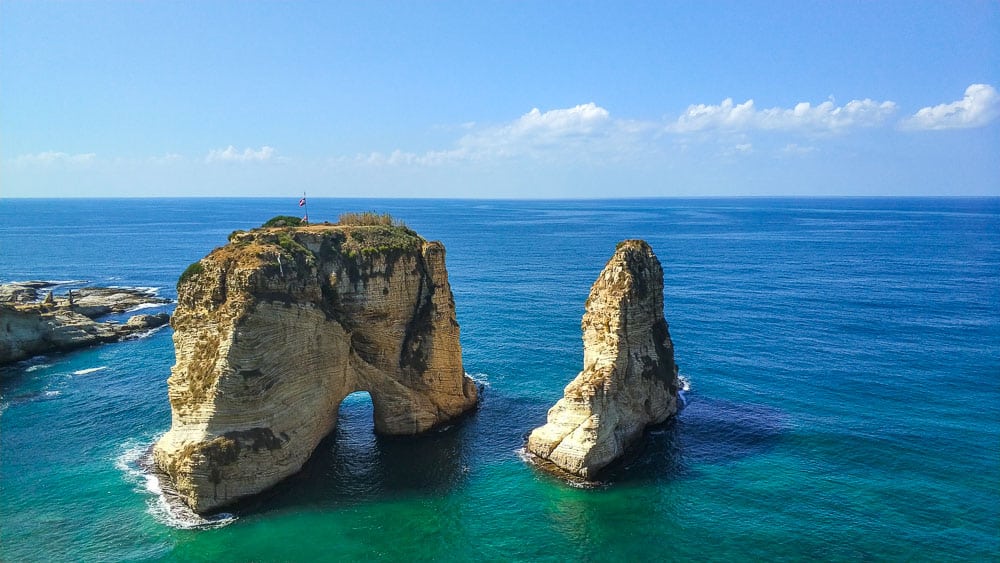Beirut, Lebanon – Travel Tips
Category
Categories
Popular Articles

## Overview of the Destination
Beirut, the capital city of Lebanon, is known as “the Paris of the Middle East” thanks to its vibrant cultural scene, historic landmarks, and exceptional culinary offerings. Straddling the Mediterranean Sea, Beirut is a bustling metropolis that blends tradition and modernity. Its rich history, diverse population, and year-round festivals make it a destination worth visiting.
## Best Time to Visit
The best time to visit Beirut is during the spring (April-June) and autumn (September-November). During these periods, the weather is comfortably warm. The city is particularly beautiful in spring when it is adorned with blossoming flowers. Summer (July-September) is the peak tourist season with lively festivals like the Beirut Holidays and Cedars International Festival. The off-season, winter, offers fewer crowds and lower prices.
## Climate & What to Pack
With a Mediterranean climate, Beirut is characterized by hot, humid summers and mild winters. Average summer temperatures range from 23 to 32°C, while winter temperatures are between 11 to 17°C. We recommend packing lightweight clothing for summer, warm clothing for winter, and a light jacket for spring and autumn. Don’t forget the swimsuits for beautiful beaches and a good pair of walking shoes for city tours.
## Getting There
Rafic Hariri International Airport is the main airport in Lebanon, located 9 km from Beirut city center. Taxis, buses and car rental services are available at the airport. For entry into Lebanon, most nationalities require a visa, which can be obtained on arrival.
## Getting Around Locally
Beirut is notorious for its traffic so the most efficient way to get around is by taxis, available almost everywhere. There’s also the option of “service taxis” – shared taxis running on fixed routes. Beirut is also fairly walkable, especially areas like Hamra, Gemmayze, and Beirut Central District. English is widely spoken, so asking for directions is easy.
## Safety Tips
Beirut is generally considered safe for tourists but caution should be exercised. Avoid demonstrations and public gatherings. Stay informed about the area’s political and security situation. Avoid driving due to chaotic traffic and poor road conditions. Genuine care and respect to local customs will make your trip smooth and enjoyable.
## Top Things to Do & See
Beirut abounds with historic sites like the Roman Baths, Beirut National Museum, Jeita Grotto, and the Raouche Rocks. Stroll along the Corniche, or explore the hip neighborhoods of Mar Mikhael and Gemmayzeh for art, culture, and nightlife. Beirut is also a gateway to other historic Lebanese sites like Byblos and Baalbek.
## Where to Stay
Luxury travellers can look at areas like Ashrafieh and Beirut Central District; mid-range accommodations are abundant in Hamra and Achrafieh, while budget accommodations can be found in Gemmayze or Jounieh.
## Food & Local Cuisine
Beirut is a food lover’s paradise. Don’t miss out on the local Lebanese dishes like hummus, tabbouleh, shawarma, and the decadent Lebanese pastries. Beirut souks and Hamra street offer a variety of dining options, from street food stalls to high-end restaurants.
## Cultural & Practical Tips
The official language is Arabic, but English and French are widely spoken. Lebanese pound (LBP) is the currency, but US Dollars are also commonly used. Tipping is customary at about 10-15%. Lebanon uses type C, D, and G plugs, with a standard voltage of 220V.
## Sustainable or Responsible Travel Tips
Respect local customs and traditions, clean after yourself especially when visiting beaches and nature reserves. Support local businesses by buying local products and dining at local eateries.
## My Travel Tip
Remember to take a step back from sightseeing and just appreciate the daily life in Beirut, spending time in its cafes, chatting with locals, and soaking in the Mediterranean vibe because Beirut is not just a city, it’s an experience.










